The Gianicolo or Janiculum Hill is often considered the “Eighth Hill of Rome”, referring to the famed seven hills around which Ancient Rome was built. There are quite a few interesting sights on the hill, including several patriotic monuments.
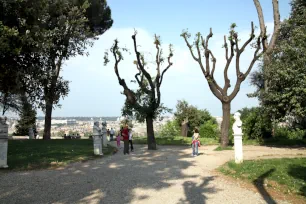
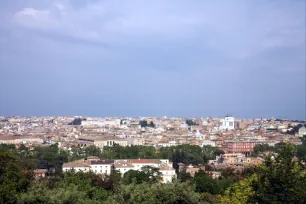
The Janiculum is situated in Trastevere, a neighborhood on the left bank of the Tiber river, across the river from the historical center of Rome.
The History of the Hill
The Janiculum was the second-highest hill in Ancient Rome. It was believed to be the center for the cult of the god Janus, hence its name. Because of its stunning location overlooking the city, it is thought that the cult’s priests would stand atop the hill and look for auspices – signs from the gods.
When the Aurelian Wall was built around Rome in the third century AD, it made its way up the Janiculum Hill so that the water mills that were used to grind corn and make bread were inside the city. The ancient water mills were in use until around the end of ninth century.
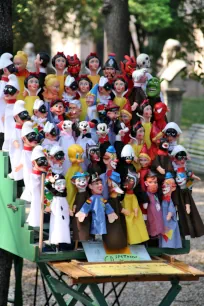

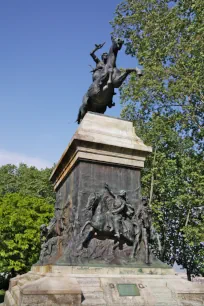
Almost a millennium later, Janiculum Hill was the site of a memorable battle. In 1849, Giuseppe Garibaldi fought against French troops attacking Rome. Even though the French well outnumbered Garibaldi’s troops, they were able to resist the French army for several weeks. This event prompted the construction of a number of monuments on the hill that pay homage to Garibaldi and his comrades, who were instrumental in the creation of a united Italy.
Sights
Locals often come here for a walk, as the park at the top of the hill provides a welcome retrieve from the hectic streets below. There are also some activities that are popular with children, one of them an authentic puppet theater.
Many visitors head to the top of the Janiculum Hill just for the view that it provides. However, there are other things to see on this hill.
Garibaldi Monuments
One inescapable sight on the Janiculum is the Garibaldi Monument, an enormous equestrian statue of Giuseppe Garibaldi that honors the Italian patriot’s heroics on this hill in 1849. The statue, located at the center of a small piazza, was built in 1895 after a design by Emilio Gallori. Four sculptures on the large pedestal depict both a battle and allegorical scenes. An inscription on the plinth reads ‘Roma o Morte’ (Rome or Death).
Giuseppe Garibaldi’s wife Anita, who fought alongside him, is also honored with an equestrian statue. Created in 1932 by Mario Rutelli the statue depicts Anita Garibaldi in pure Wild West style. She sits astride on a prancing horse with a pistol in her right hand while holding her newborn child in her other hand.
The two Garibaldi statues are a mere one hundred meters apart, with the Viale aldo Fabrizi connecting the couple. The area between the two monuments is littered with busts that honor Italian patriots.
Independence War Memorial

There’s another monument on the Janiculum honoring Italian Patriots: a rectangular, arched memorial that is also inscribed with the dramatic words ‘Roma o Morte’.
The memorial in white marble is situated on the south slope of the hill and honors the patriots who died between 1848 and 1870 in the Italian Independence Wars.

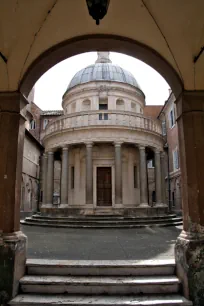
Manfredi Lighthouse
A totally different sight on the hilltop is the Faro Al Gianicolo (Janiculum Lighthouse), a lighthouse that was built in 1911. It was a gift from Italian immigrants in Argentina to Rome. The structure is also known as the Manfredi lighthouse, after its creator, Manfredo Manfredi.
San Pietro in Montorio and Tempietto
At the bottom of the hill, opposite the Via Garibaldi from the Independence War Memorial, is the Church of San Pietro in Montorio, part of a convent complex that was built in the late fifteenth century on a site that was incorrectly thought to be the place where St. Peter was crucified. The church was erected on the order of the Spanish king Ferdinand II, who owned the property.
In one of the cloisters to the right of the church, once thought to be the precise spot of St. Peter’s crucifixion, stands the Tempietto, a small circular sanctuary that was built in 1502 by Donato Bramante. Bramante based his colonnaded design for the sanctuary on that of the ancient Temple of Vesta in Tivoli. With the construction of the small temple, Bramante’s first work in Rome, the Florentine architect introduced the Renaissance style to Rome.
Fontana dell’Acqua Paola
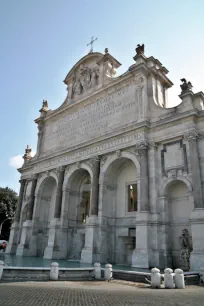
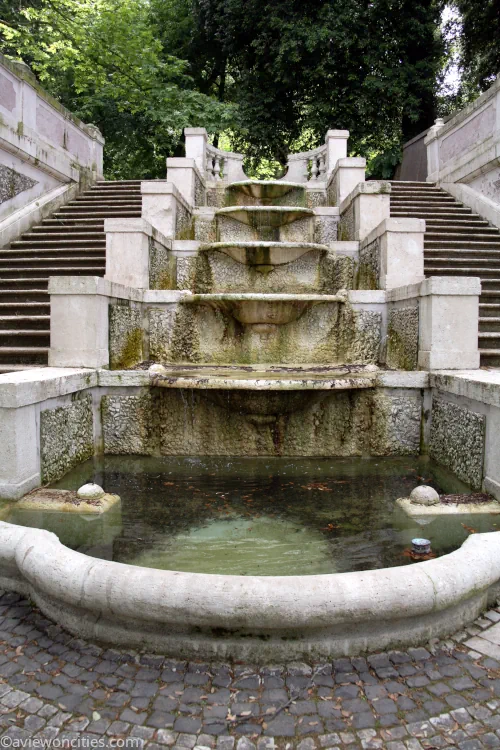
Nearby, further along the Via Garibaldi, is the Fontana dell’Acqua Paola, a Baroque fountain built in 1612 for Pope Paul V. The fountain is named after the pope (Paolo is Italian for Paul).
The monumental fountain was designed by the architects Flaminio Ponzio and Giovanni Fontana. It was built to celebrate the reopening of an old Roman aqueduct, originally created in 109 AD by Emperor Trajan. The fountain was constructed with marble taken from the Roman Forum and resulted in the destruction of the Temple of Minerva, which until then was still pretty much intact.
Orto Botanico
On the eastern slope of the Janiculum Hill lies the Orto Botanico, a twelve hectare (30 acre) large botanical garden that was created in the nineteenth century on a domain that formerly belonged to cardinal Corsini.
Besides several thousand plant species, the garden also boasts some interesting structures such as an old greenhouse, a monumental staircase and two fountains. You can’t access the botanical garden from the Janiculum; the main entrance is on the east side at the foot of the hill, near the Corsini Palace.
- Next: EUR
- More Sights & Attractions in Rome

